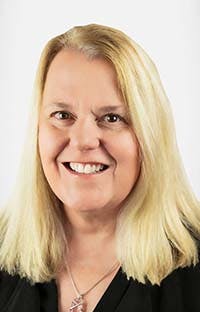After years of trending lower, the price of data center space reversed course and began moving higher in 2022. Today the data center experts in our DCF Executive Roundtable panel address what's driving this trend, and where data center pricing is headed next.
Our panelists include Flexential CEO Chris Downie, Nancy Novak of Compass Datacenters and Infrastructure Masons, Sabey Data Centers' Tim Mirick, and George Slessman, the CEO of DCX. The conversation is moderated by Rich Miller, the founder and editor of Data Center Frontier. Here’s today’s discussion:
Data Center Frontier: After years of trending lower, pricing for data center capacity increased in 2022. What lies ahead for data center pricing, and what are the primary factors that will influence where prices go in the future?
This, on top of utility constraints in most of the major markets, has pushed rates back nearly to where they were a decade ago. Long-term deals that operators put into place with very low escalators are now shedding yield every year with inflation and the cost of new debt both over 6%.
The good news is that by building more resiliency into applications, rather than buildings, and implementing denser builds, your cost per kW can go down. Then, as the utilities and supply chain catch up, pricing can stabilize.
The interesting thing to watch – will the AI revolution be THE inflection point of obsolescence for the majority of built data centers? With an eye to the balance sheet, I think the "higher for longer" interest environment will also be a major headwind for current data center platforms that have significant low cost debt and leverage levels based on 2021-2022 cap rates.
We’re also seeing a growing constraint on Tier 1 markets where prices have risen due to increasing demand for space and power. On the upside, secondary markets continue to offer very attractive options for customers who are willing to leverage these locations for their future buildouts.
Flexential has been ahead of this trend, given 70% of our capacity is delivered in secondary markets, positioned near the 30 fastest-growing U.S. cities. Also, Flexential’s focus on sustainability is part of our long-term solution to ease pricing. Our next-generation designs drive efficiency throughout our operations, enabling highly cost-effective implementations.
The shortage of power availability in some of the industry’s major markets (and the associated costs) could be the boon that second- and third-tier markets have been waiting for. If I’m faced with an overserved location with high power costs, a non-traditional market with the available infrastructure and affordable power becomes much more attractive to me.
If there is a near term “wild card” in power availability and pricing it’s how fast and effective the efforts of companies such as Bloom Energy’s fuel cells and other emerging technologies like Electromagnetic Compressed Air are in developing into large scale alternatives.
NEXT: Can hydrogen help data centers provide more sustainable backup power?
Keep pace with the fact-moving world of data centers and cloud computing by following us on Twitter and Facebook, connecting with DCF on LinkedIn, and signing up for our weekly newspaper using the form below:










